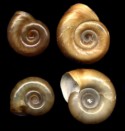

Proper nutrition and management practices
can prevent many problems associated with caring for horses. You can
learn how to provide your horse with a better life-style by taking the online course
"How to Feed for Maximum Performance" taught by Eleanor Richards. Go
to www.horsecoursesonline.com for more information. Contact Eleanor at elrichards@thewayofhorses.com or (440) 554-3714. Be sure to visit Eleanor's web site at www.thewayofhorses.com |
Potomac Horse Fever By Eleanor Richards Copyright©2007 Four horses died of Potomac horse fever in south Texas in the summer of 2007. Could they be the victims of casual grazing near ponds and creeks? Horses contract Potomac fever by accidentally ingesting aquatic insects that carry the bacteria. The bacterium that causes the fever is present in water that is home to fresh water snails, insect larvae and other insects. Researchers have confirmed one route of exposure to horses is the accidental ingestion of aquatic insects such as mayflies and dragonflies. The fever is more common in the east. But because of the heavy rains Texas received during the early summer of 2007 there was more standing water providing habitat for aquatic insects. In addition to the fever, Potomac horse fever also causes diarrhea, depression, no appetite, swelling in the lower legs and laminitis. Mares in foal may abort. Most horses that die succumb to dehydration, septic shock or severe symptoms related to the laminitis. Potomac horse fever is not transmittable from horse-to-horse. If the disease is caught early, treatment with antibiotics can help fight off the disease. Intense supportive care is mandatory, which includes plenty of fluids, proper diet and anti-inflammatory drugs. Because of false positives Potomac horse fever is difficult to detect using antibody tests. The best diagnostic tests are by finding the organism in the white blood cell using a microscope, or by doing a PCR test on the manure or blood. There is a preventative vaccine available through veterinarians that helps protect horses against Potomac horse fever, but it is not 100% effective. Horses that are vaccinated may need a booster. Vaccinated horses can still get the disease; but they may have a less intense reaction and recover quicker. Check with your veterinarian for a vaccination schedule. What's also effective is controlling where your horse drinks, grazes and eliminating standing water. Preventing contamination of feed and water by the adult insects is imperative. By providing stock tanks, buckets or automatic waters it is easier to keep the containers free of the insects that transport the disease to horses. Daily cleaning lessens the opportunity for a horse to accidentally swallow an insect. Do not put feeders or waterers under lights that are on all night. The lights attract the insects. Keep lights shut off in the barn at night to prevent insects from entering the building. Try to not allow your horse to graze along side standing water, streams or ponds. The insects will be more prominent in these areas. Draining and filling in areas that have standing water will eliminate places for aquatic insects to breed and thrive. The aquatic insects are usually active starting late April and continue to hatch through the end of July. Potomac horse fever is not a disease limited to the east coast. Prevention, management and observation can protect your horse no matter where you live. Copyright©thewayofhorses Eleanor Richards |

Fresh Water Snails Univeristy of Alabama |